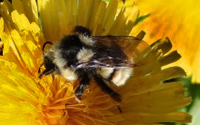SUMMER PHOBIAS

ARE YOU A SUMMER PHOBIA SUFFERER?
By GRAHAM W PRICE.
A wasp, a caterpillar, dipping your toes into the sea, smelling the flowers, watching the sunrise – if any of these send you running for your life in hysterics, then you’re in good company. There are thousands of others like you who suffer from an array of summer phobias.
Butterflies, bees, nudity, sunshine, ants, bathing, flowers – even the sea … they’re all on the phobia list. And summer is one of the busiest times for treating phobias.
Many of us have things we’re a bit squeamish about. A phobia is more intense, involving significant anxiety at the thought of, or sight of, the source of the phobia.
How do phobias arise? Usually they are the result of a frightening or traumatic experience, earlier in our lives, most commonly in childhood, but sometimes as an adult. Something crawling over us and giving us a fright as a child is enough to trigger a phobia.
One of my clients was stung by a bee as a child and developed a phobia of all flying insects. Another disturbed a harmless snake as an adult but got such a fright she developed a snake phobia. Often, though, there’s no memory of the initiating event.
And very often the phobia can be for something that, to most people, would seem innocuous.
For example:
Ablutophobia- Fear of bathing
Anthrophobia – Fear of flowers
Botanophobia- Fear of plants
Cymophobia – Fear of waves
Francophobia- Fear of French culture
Melissophobia – Fear of bees
Mottephobia- Fear of moths
Myrmecophobia- Fear of ants
Myxophobia- Fear of slime
Nudophobia- Fear of nudity
Phengophobia- Fear of sunshine
Ranidaphobia- Fear of frogs
Spheksophobia- Fear of wasps
Thalassophobia- Fear of the sea
Once the phobia is triggered, we’ll then try to avoid the object of the phobia. And avoidance tends to reinforce the phobia. Our minds interpret avoidance as confirmation of danger and so the often unconscious beliefs driving the phobia are reinforced.
Because of this, a mild initial disturbance can sometimes develop into a phobia over time through repeated avoidance. Several of my clients developed arachnophobia, a phobia of spiders, in this way.
The traditional cure for phobia is exposure therapy; a technique that now forms part of Cognitive Behavioural Therapy (CBT). This involves introducing the client gradually to the feared object. Acceptance-based therapies such as Acceptance-Action Therapy (AAT) that focuses on accepting feelings and being willing to experience anxiety-provoking situations, are now often used in conjunction with CBT.
Other techniques including hypnotherapy, or dissociative techniques involving imagining ourselves watching a video of the phobic object, can also be effective. I use a combination of these techniques, to the extent practical, to achieve a rapid and lasting cure.
These days no-one should have to endure their phobia for long. Modern treatments are highly effective and phobias can be quickly cured.
About the Author
Graham W Price is a Chartered Psychologist, CBT and AAT specialist, hypnotherapist, BPS, UKCP, HPC, BABCP accredited, personal development trainer and professional speaker.
Graham is author of ‘What Is, Is! The Power of Positive Acceptance, contact: grahamprice@abicord.com, 01372 815041, www.abicord.com
